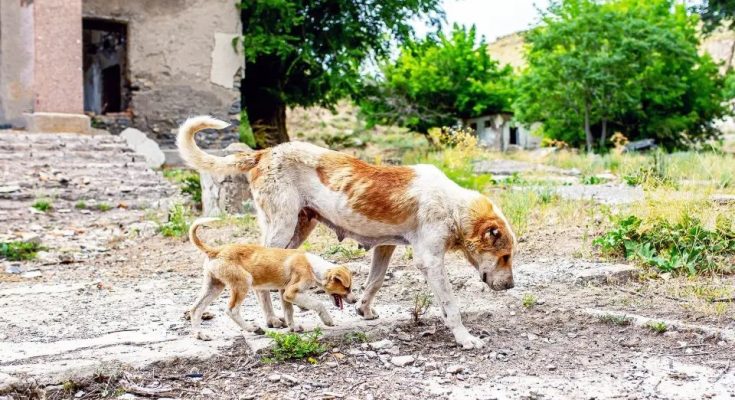

In the abandoned Chernobyl Exclusion Zone, where radiation levels remain dangerously high, a surprising community of dogs has managed to thrive. Descended from pets left behind during the 1986 evacuation, these resilient animals have adapted to an environment once thought uninhabitable.
Scientists are now studying these dogs to uncover how life endures in such a hostile setting. “Somehow, two small populations of dogs managed to survive in that highly toxic environment,” noted Dr. Norman J. Kleiman, lead researcher on a groundbreaking study.

According to Earth.com, here are 10 facts you should know about the Chernobyl dogs and their unique place in scientific research:
1. Two Distinct Populations
Researchers have discovered two distinct groups of Chernobyl dogs. One group roams near the former Chernobyl reactors, while the other lives about 10 miles away in Chernobyl City. These two populations are rarely interbred, suggesting significant genetic differences. “Somehow, two small populations of dogs managed to survive in that highly toxic environment,” said Dr. Kleiman.
2. A Legacy of Abandonment
The Chernobyl dogs are descendants of pets abandoned during the 1986 nuclear disaster. After the explosion, residents evacuated, leaving behind their pets, many of whom now roam the Exclusion Zone. These dogs have adapted to life in a radioactive wasteland, relying on scraps from workers and visitors for survival.
3. Adaptation to Harsh Conditions
Living in a radioactive environment, the dogs face extreme winters, limited food sources, and constant radiation exposure. Despite these challenges, they have formed packs for protection and companionship, showing how animals can adapt to even the most hostile conditions.
4. Some Dogs Have Bonded with Humans
While many dogs have formed their packs, others have surprisingly bonded with humans, especially the workers and scientists who still operate in the zone. These interactions testify to the dogs’ resilience and survival ability, even forming new relationships in such an extreme environment.
5. Efforts to Help the Dogs
Over the years, various organizations have stepped in to help the Chernobyl dogs. Efforts include providing vaccinations, medical care, and even adoption programs to give some dogs a chance at a new life outside the zone.
6. First Genetic Study of Chernobyl Dogs
This study marks the first time scientists have analyzed the genetic makeup of the stray dogs living near the Chernobyl Nuclear Power Plant. “In addition to classifying the population dynamics within these dogs at both locations, we took the first steps towards understanding how chronic exposure to multiple environmental hazards may have impacted these populations,” explained Dr. Kleiman.
7. Genetic Markers of Environmental Adaptation
By studying the dogs’ DNA, scientists identified 391 regions in their genomes that differed between the two groups. Some of these markers are linked to genes involved in genetic repair, which could indicate how the dogs are coping with radiation exposure. “Think of these regions as markers, or signposts, on a highway. They identify areas within the genome where we should look more closely at nearby genes,” explained Dr. Matthew Breen.
8. Possible Genetic Impact of Environmental Hazards
One of the key questions raised by the study is whether environmental disasters like the Chernobyl meltdown can cause genetic changes. Dr. Breen posed the overarching question: “Does an environmental disaster of this magnitude have a genetic impact on life in the region?”
9. Much Still to Be Discovered
While the findings are fascinating, scientists caution that more research is needed to fully understand the implications of these genetic changes. “At this stage, we cannot say for sure that any genetic alterations are in response to the multigenerational and complex exposures; we have a lot more work to do to determine if that is the case,” said Dr. Breen.
10. Insights for Human Health
The research has broader implications beyond just the canine world. Dogs are considered a sentinel species, meaning they can offer valuable insights into human health. “By teasing out whether or not the genetic changes we detected in these dogs are the canine genome’s response to the exposures the populations have faced, we may be able to understand how the dogs survived in such a hostile environment and what that might mean for any population—animal or human—that experiences similar exposures,” concluded Dr Breen.
ALSO READ TOP STORIES FROM NIGERIAN TRIBUNE








